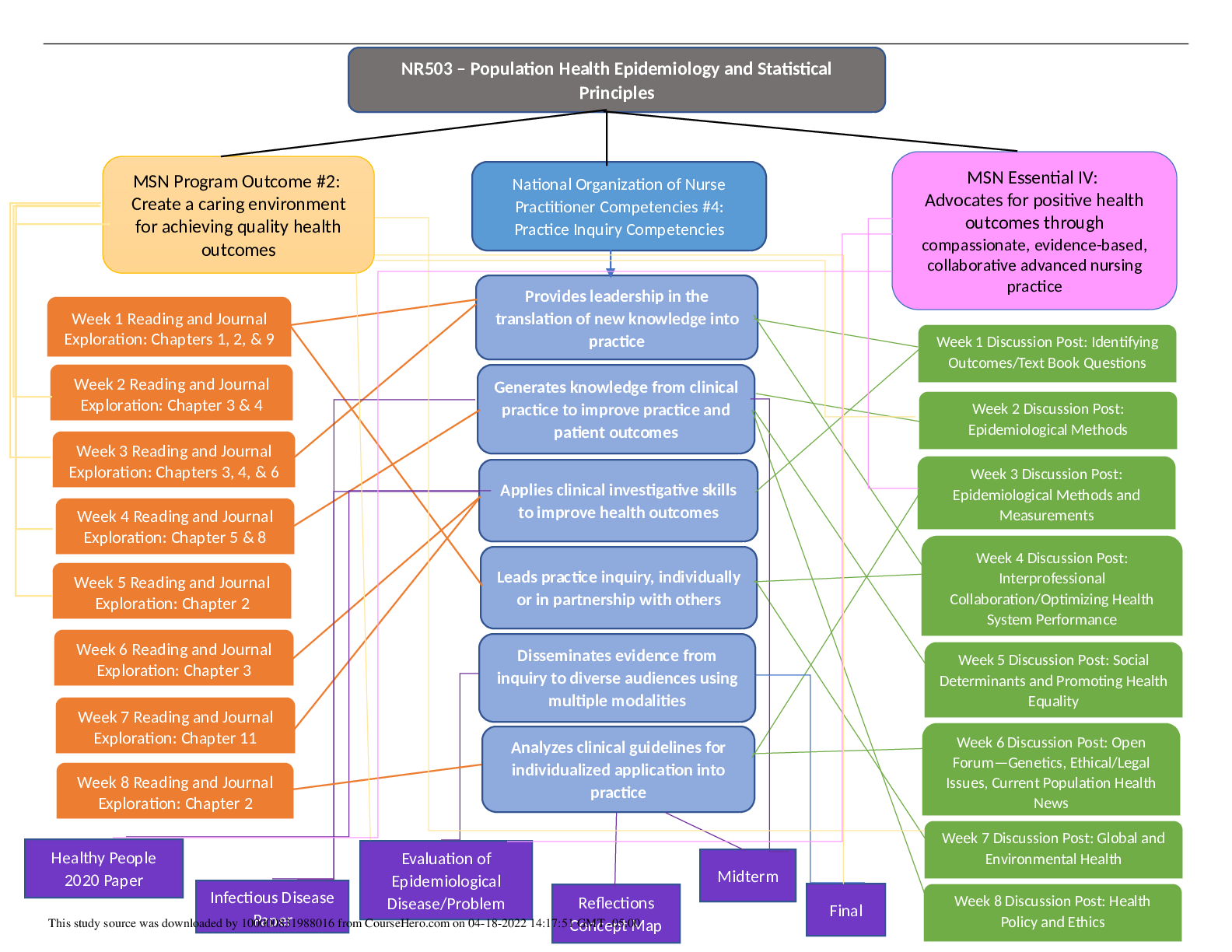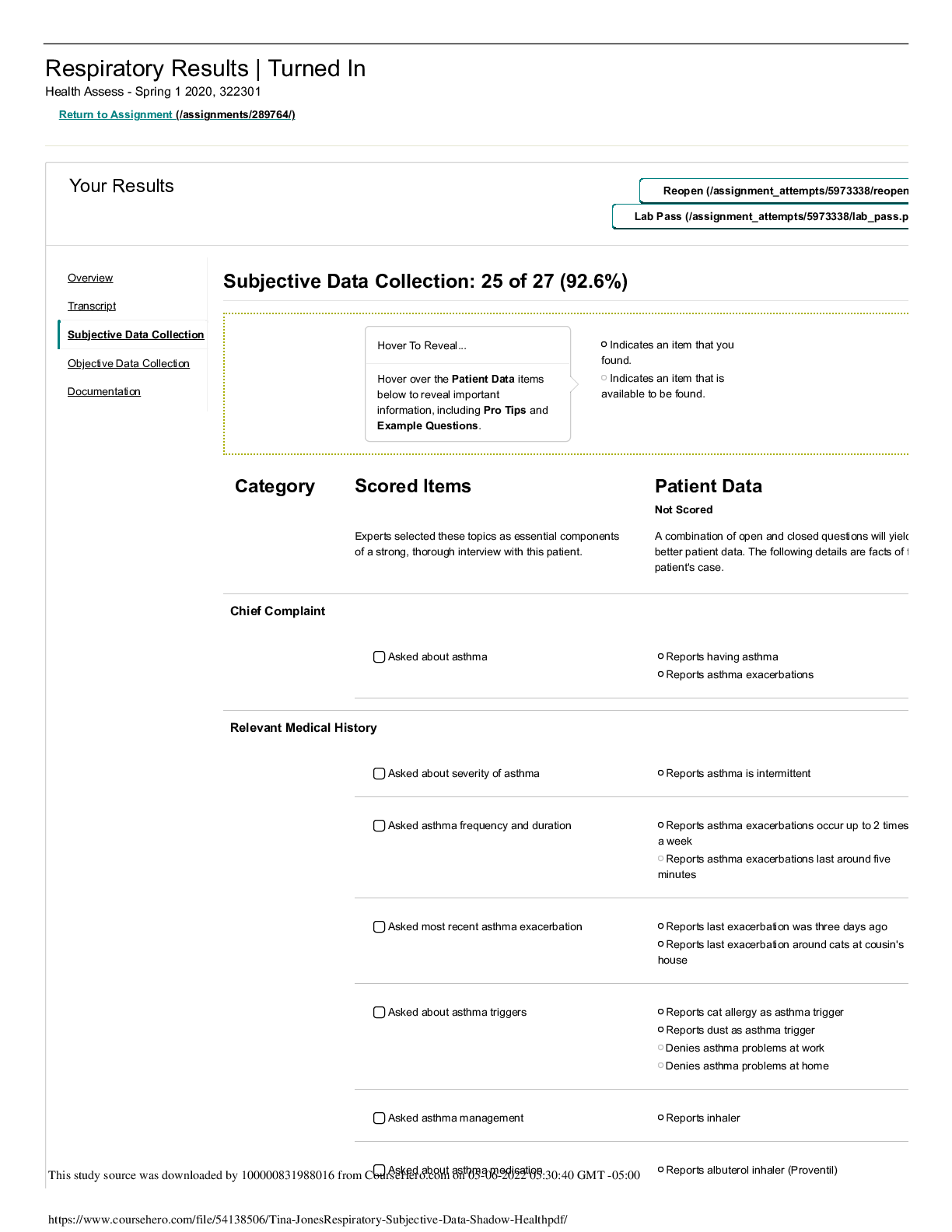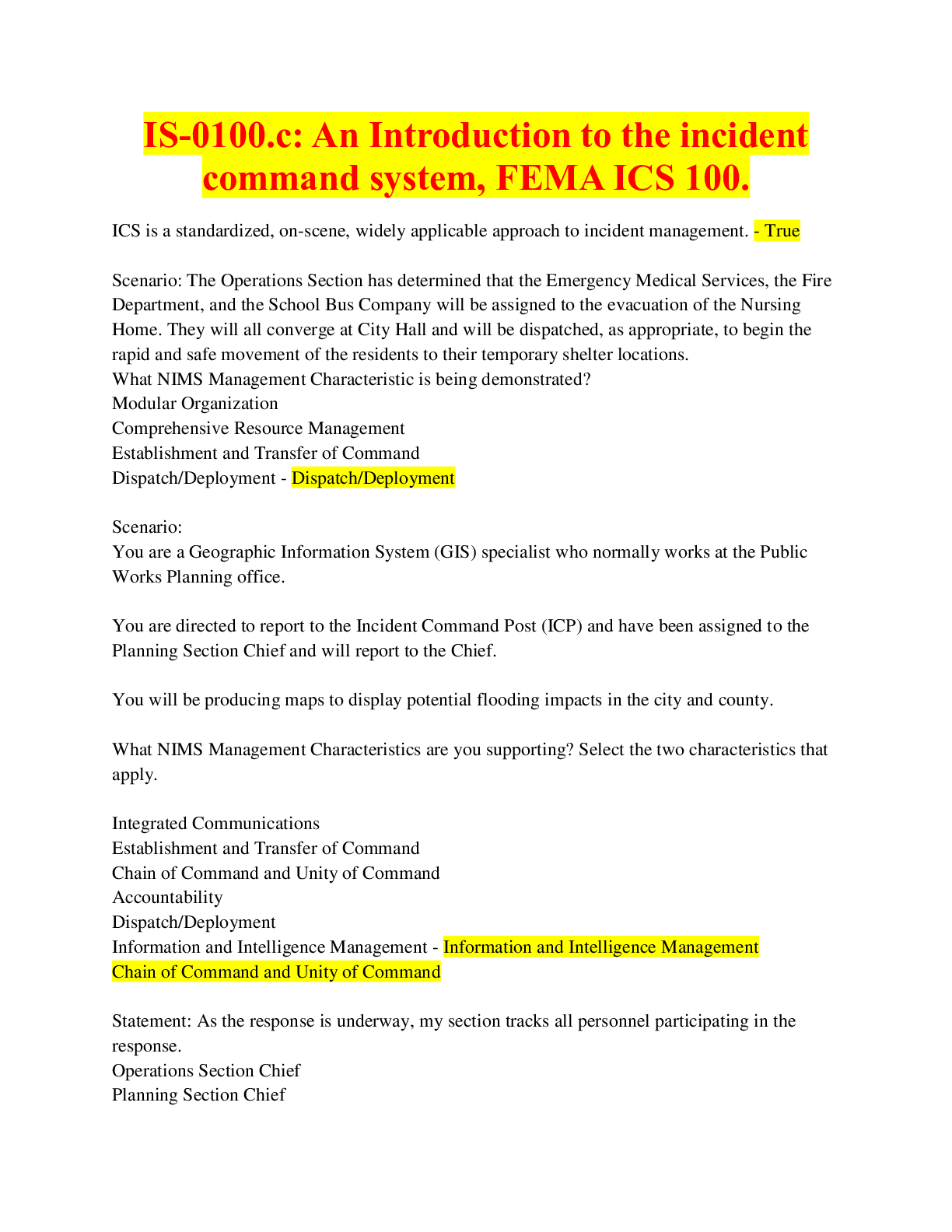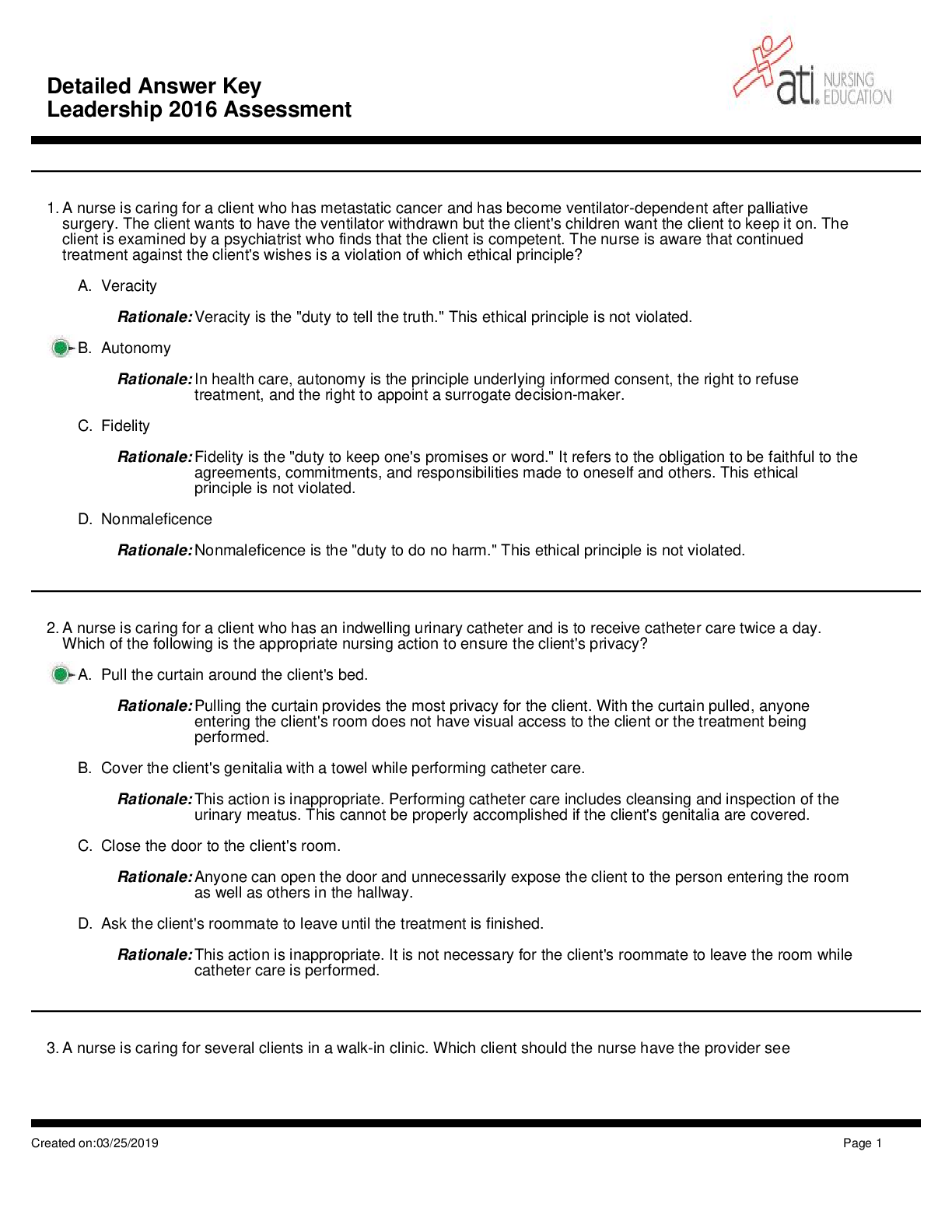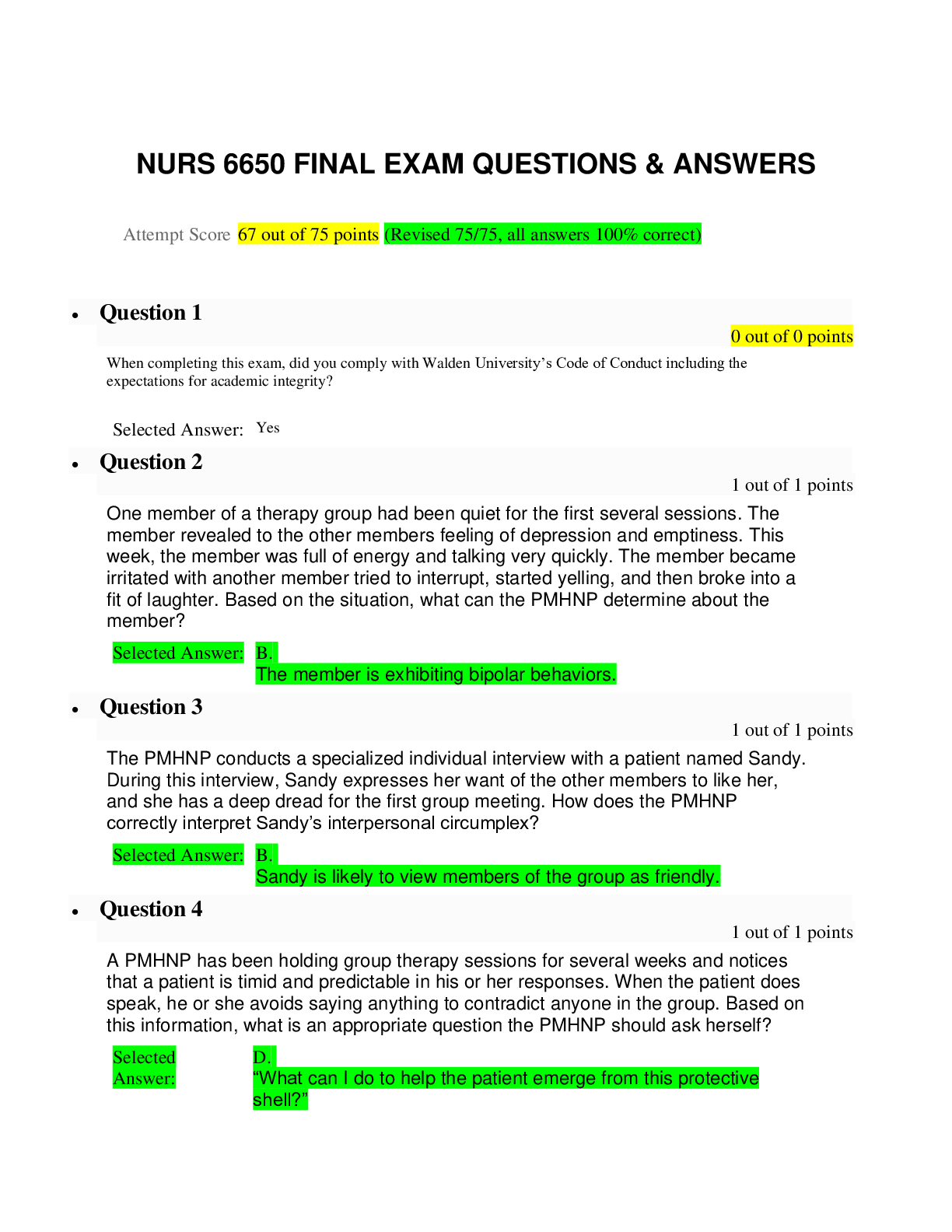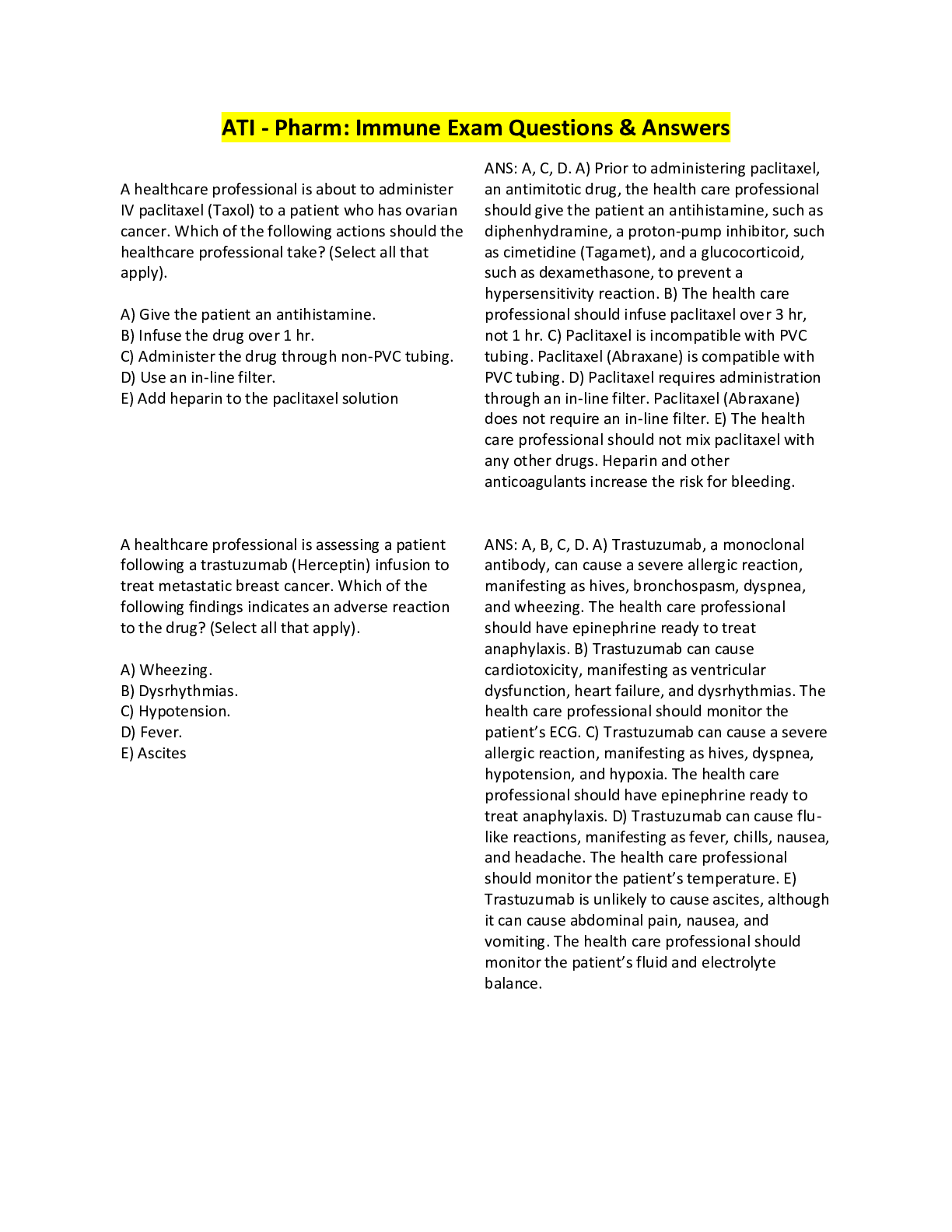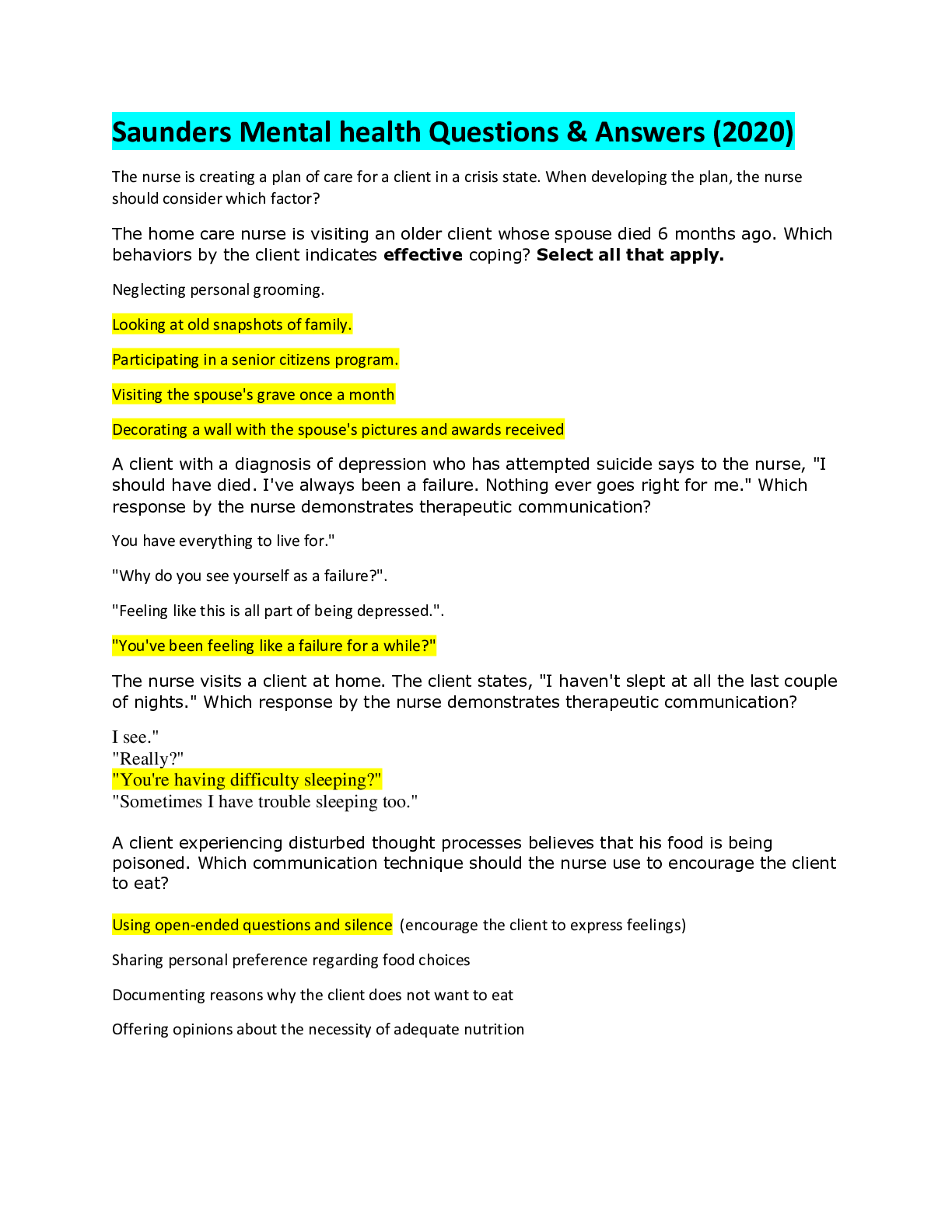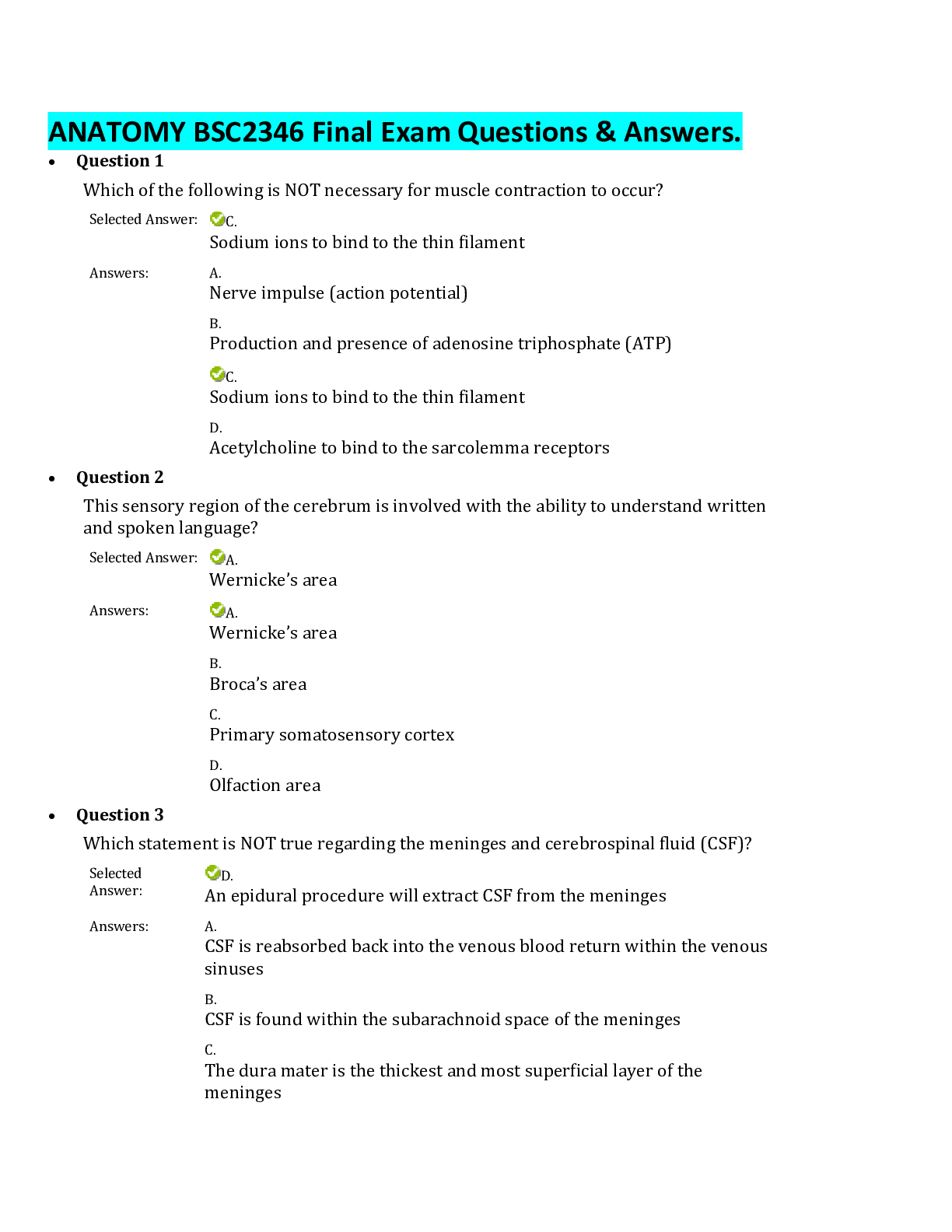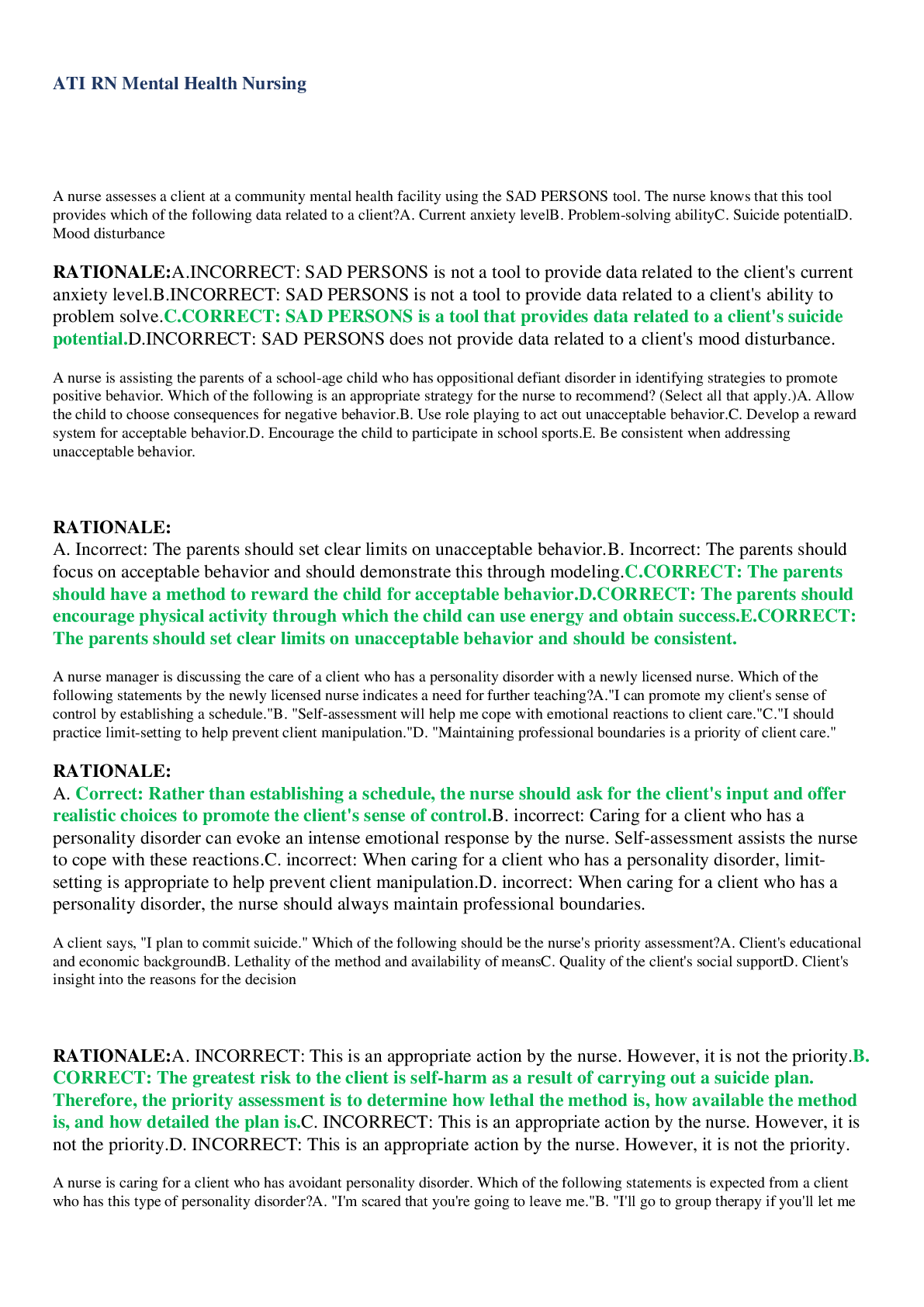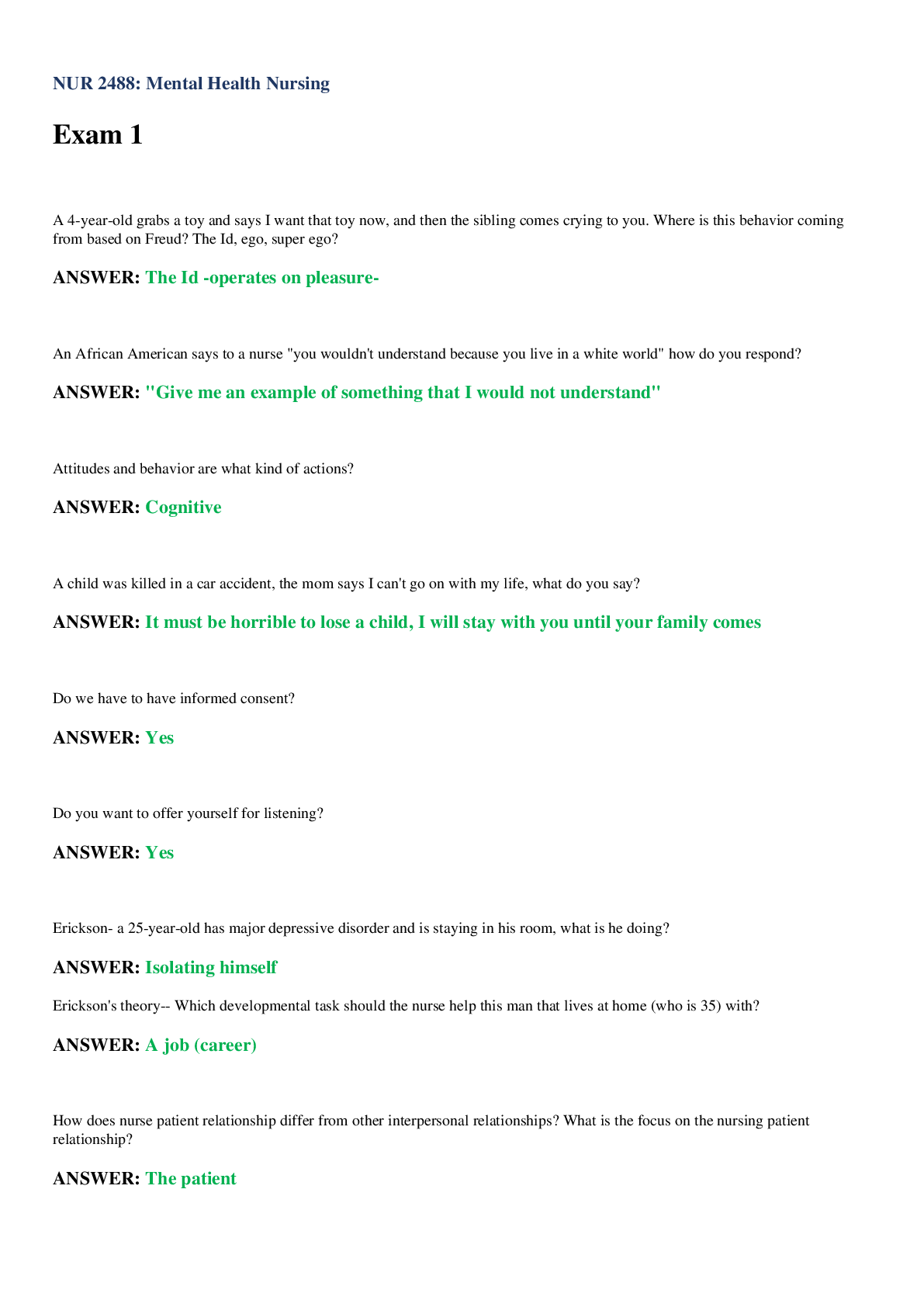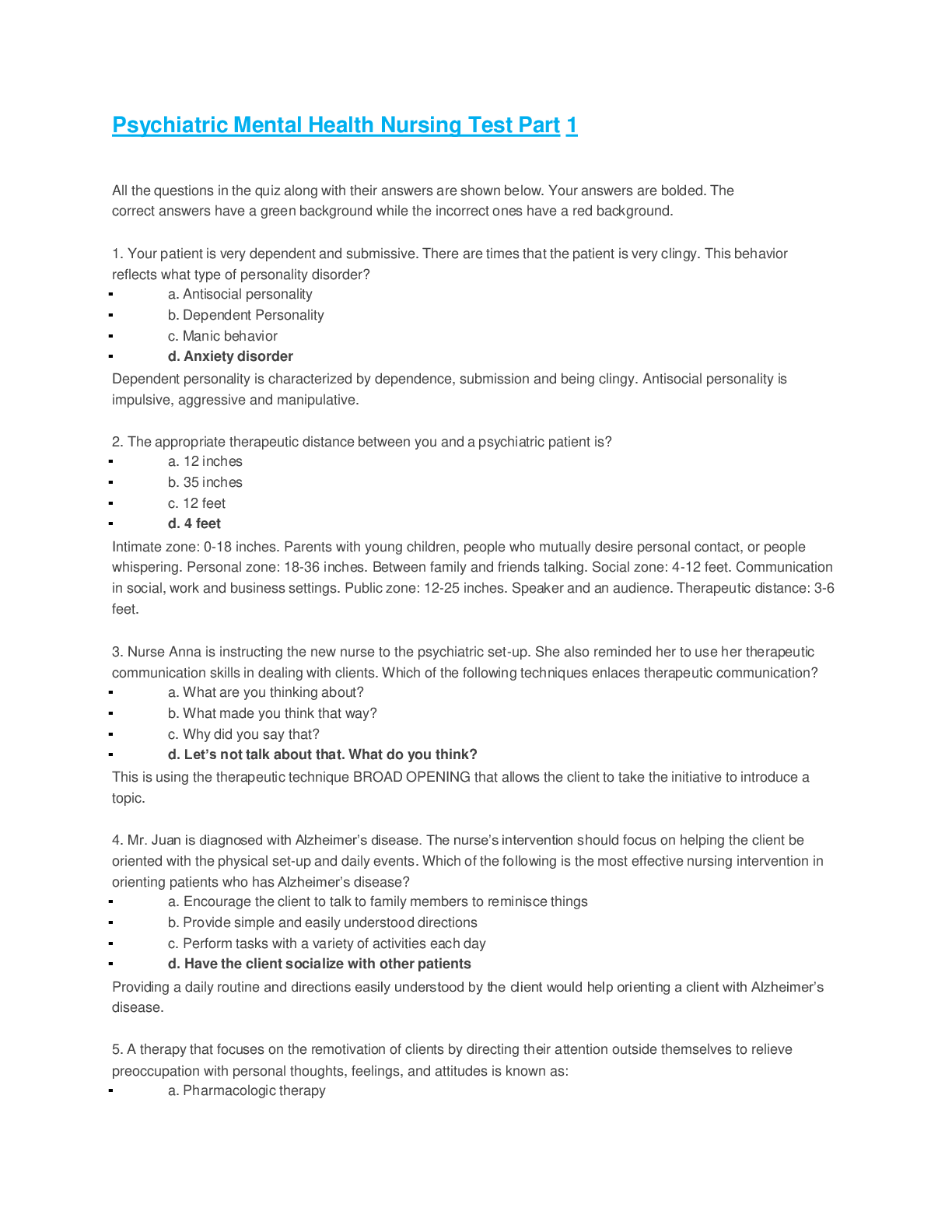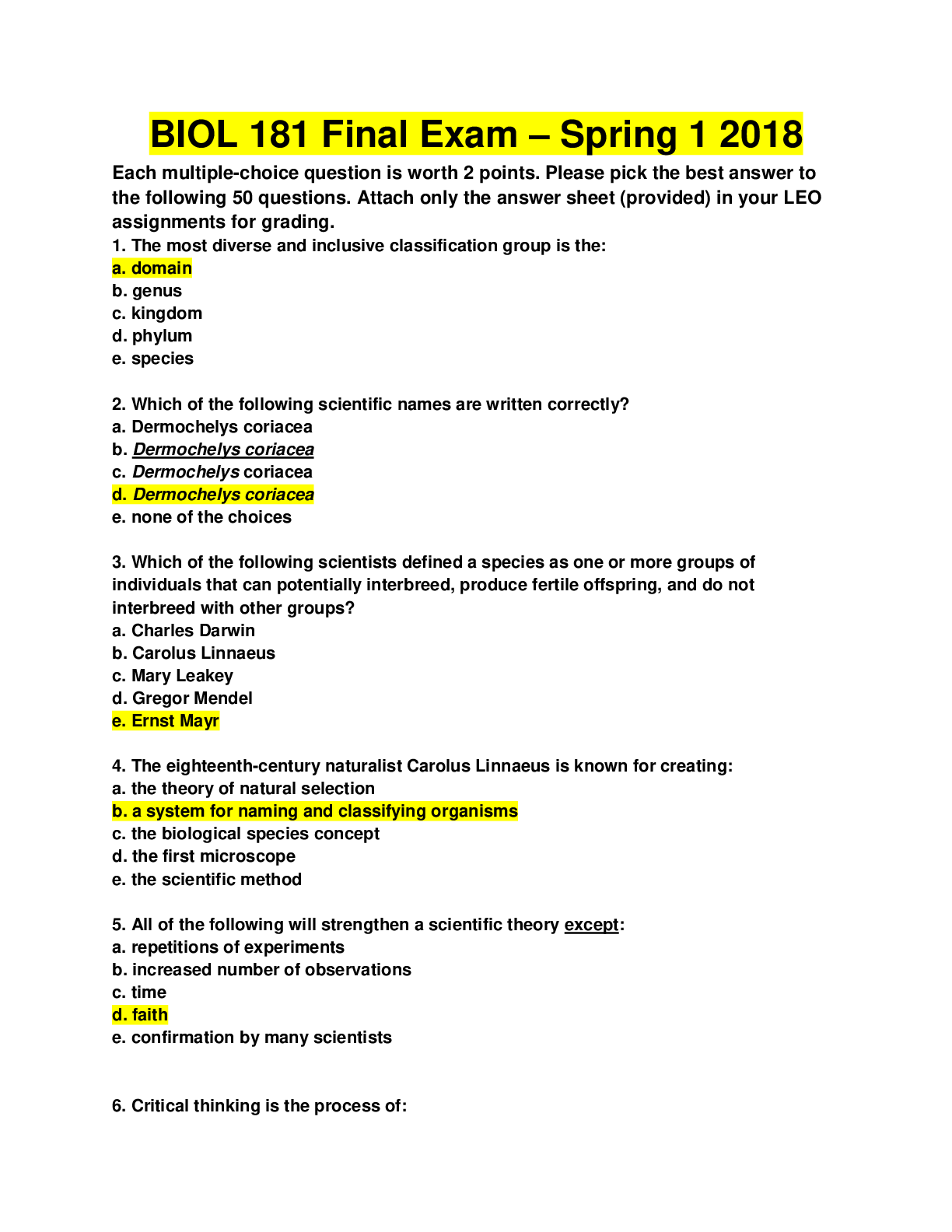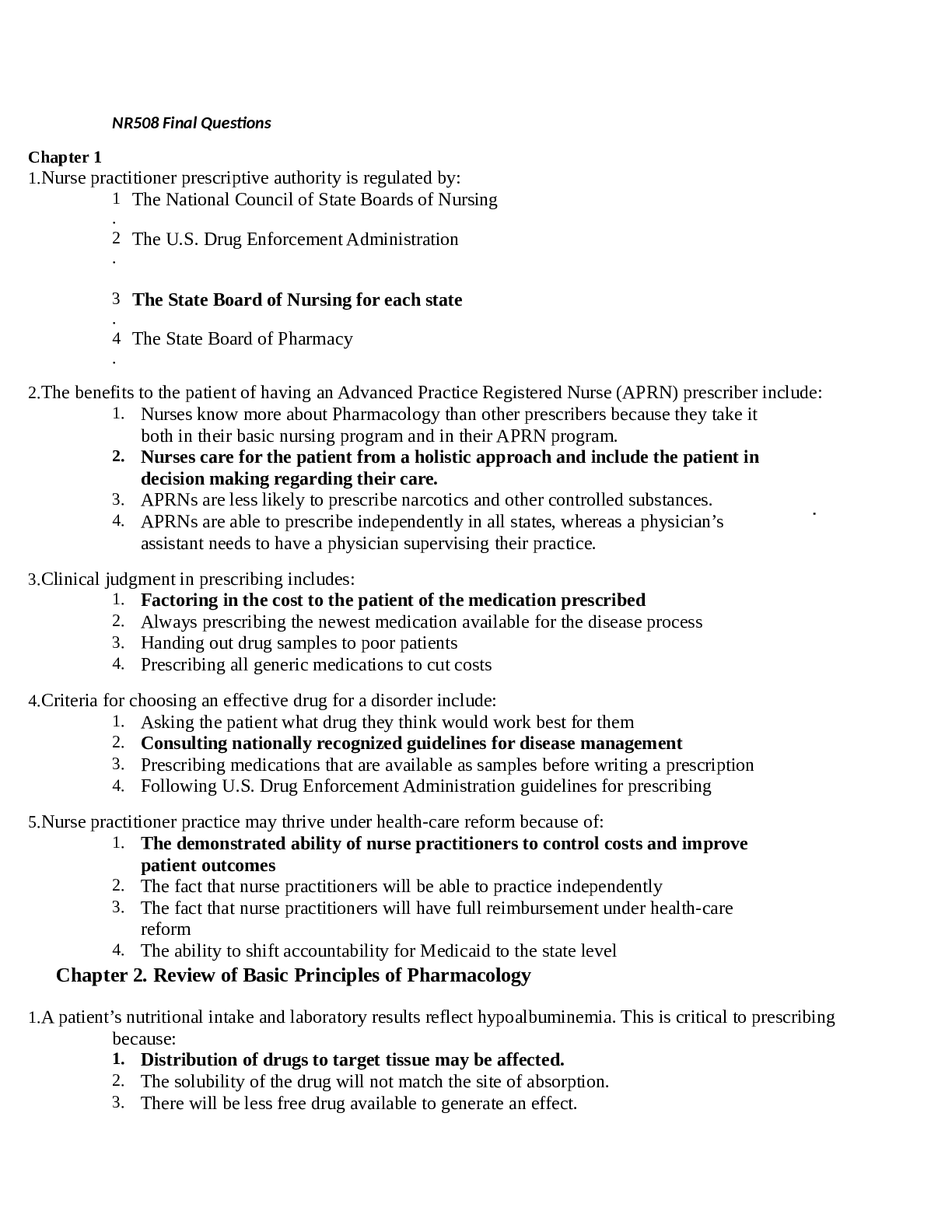*NURSING > EXAM > RNSG2213/RNSG 2213 Mental Health Nursing Review for Exam 2 Level 3 Exam Questions & Answers, With Ra (All)
RNSG2213/RNSG 2213 Mental Health Nursing Review for Exam 2 Level 3 Exam Questions & Answers, With Rationales
Document Content and Description Below
RNSG2213/RNSG 2213 Mental Health Nursing Review for Exam 2 Level 3 Exam Questions & Answers, With Rationales-A patient asks a nurse, "What are neurotransmitters? My doctor says mine are out of balance... ." The best reply would be: a. "You must feel relieved to know that your problem has a physical basis." b. "Neurotransmitters are chemicals that pass messages between brain cells." c. "It is a high-level concept to explain. You should ask the doctor to tell you more." d. "Neurotransmitters are substances we eat daily that influence memory and mood." - B Stating that neurotransmitters are chemicals that pass messages between brain cells gives the most accurate information. Neurotransmitters are messengers in the central nervous system. They are released from the axon terminal, diffuse across the synapse, and attach to specialized receptors on the postsynaptic neuron. The incorrect responses do not answer the patient's question, are demeaning, and provide untrue and misleading information. The parent of an adolescent with schizophrenia asks a nurse, "My child's doctor ordered a positron-emission tomography (PET) scan. What is that?" Select the nurse's best reply. a. "PET uses a magnetic field and gamma waves to identify problems areas in the brain. Does your teenager have any metal implants?" b. "It's a special type of x-ray image that shows structures of the brain and whether a brain injury has ever occurred." c. "PET is a scan that passes an electrical current through the brain and shows brain wave activity. PET can help diagnose seizures." d. "PET is a special scan that shows blood flow and activity in the brain." - D The parent is seeking information about PET scans. It is important to use terms the parent can understand. The correct option is the only reply that provides factual information relevant to PET scans. The incorrect responses describe magnetic resonance imaging (MRI), computed tomographic (CT) scans, and electroencephalography (EEG). A patient has dementia. The health care provider wants to make a differential diagnosis between Alzheimer disease and multiple infarctions. Which diagnostic procedure should a nurse expect to prepare the patient for first? a. Computed tomography (CT) scan b. Positron emission tomography (PET) scan c. Functional magnetic resonance imaging (fMRI) d. Single-photon-emission computed tomography (SPECT) scan - A A CT scan shows the presence or absence of structural changes, including cortical atrophy, ventricular enlargement, and areas of infarction—information that will be helpful to the health care provider. The other tests focus on brain activity and are more expensive; they may be ordered later. A patient has delusions and hallucinations. Before beginning treatment with a psychotropic medication, the health care provider wants to rule out the presence of a brain tumor. For which test will a nurse need to prepare the patient? a. Cerebral arteriogram b. Computed tomography (CT) scan or magnetic resonance imaging (MRI) c. Positron emission tomography (PET) or single photon emission computed tomography (SPECT) d. Functional magnetic resonance imaging (fMRI) - B A CT scan and an MRI visualize neoplasms and other structural abnormalities. A PET scan, SPECT scan, and fMRI, which give information about brain function, are not indicated. An arteriogram would not be appropriate. The nurse wants to assess for disturbances in circadian rhythms in a patient admitted for depression. Which question best implements this assessment? a. "Do you ever see or hear things that others do not?" b. "Do you have problems with short-term memory?" c. "What are your worst and best times of day?" d. "How would you describe your thinking?" - C Mood changes throughout the day are related to circadian rhythms. Questions about sleep pattern would also be relevant to circadian rhythms. The question about seeing or hearing things is relevant to the assessment for illusions and hallucinations. The question about thinking is relevant to the assessment of thought processes. The other question is relevant to assessment of memory. A nurse administers a medication that potentiates the action of gamma- aminobutyric acid (GABA). Which finding would be expected? a. Reduced anxiety b. Improved memory c. More organized thinking d. Fewer sensory perceptual alterations - A Increased levels of GABA reduce anxiety, thus any potentiation of GABA action should result in anxiety reduction. Memory enhancement is associated with acetylcholine and substance P. Thought disorganization is associated with dopamine. GABA is not associated with sensory perceptual alterations. On the basis of current knowledge of neurotransmitter effects, a nurse anticipates that the treatment plan for a patient with memory difficulties may include medications designed to: a. inhibit GABA production. b. increase dopamine sensitivity. c. decrease dopamine at receptor sites. d. prevent destruction of acetylcholine. - D Increased acetylcholine plays a role in learning and memory. Preventing the destruction of acetylcholine by acetylcholinesterase results in higher levels of acetylcholine with the potential for improved memory. GABA is known to affect anxiety level rather than memory. Increased dopamine causes symptoms associated with schizophrenia or mania rather than improves memory. Decreasing dopamine at receptor sites is associated with Parkinson disease rather than improving memory. A patient has disorganized thinking associated with schizophrenia. Neuroimaging would most likely show dysfunction in which part of the brain? a. Brainstem b. Cerebellum c. Temporal lobe d. Prefrontal cortex - D [Show More]
Last updated: 6 days ago
Preview 5 out of 77 pages

Loading document previews ...
Buy this document to get the full access instantly
Instant Download Access after purchase
Add to cartInstant download
We Accept:

Reviews( 0 )
$16.50
Document information
Connected school, study & course
About the document
Uploaded On
Jun 25, 2024
Number of pages
77
Written in
Additional information
This document has been written for:
Uploaded
Jun 25, 2024
Downloads
0
Views
6






